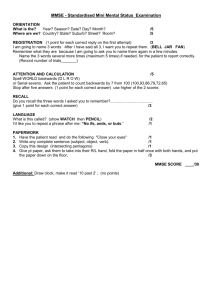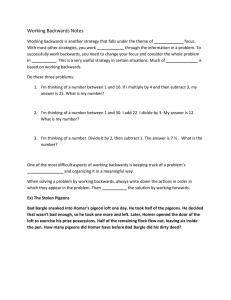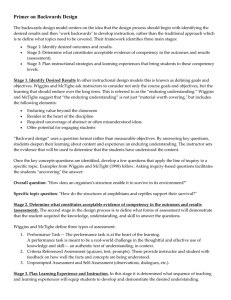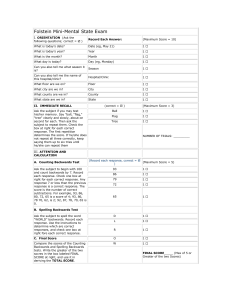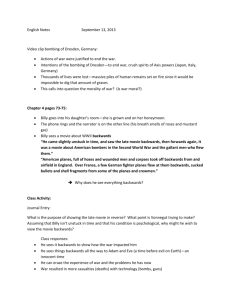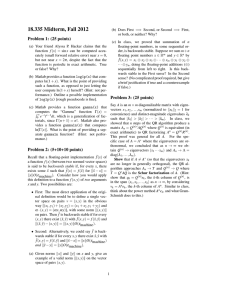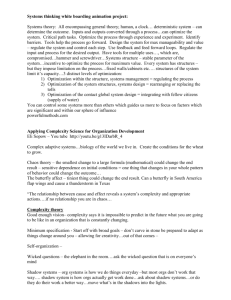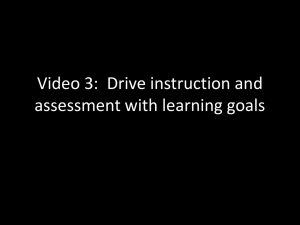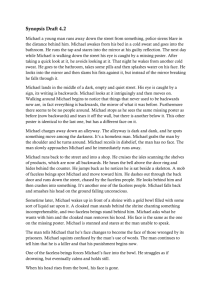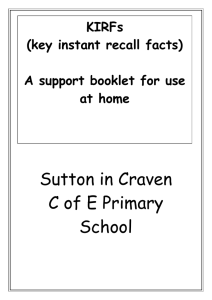BrownGrade1UBD - English
advertisement
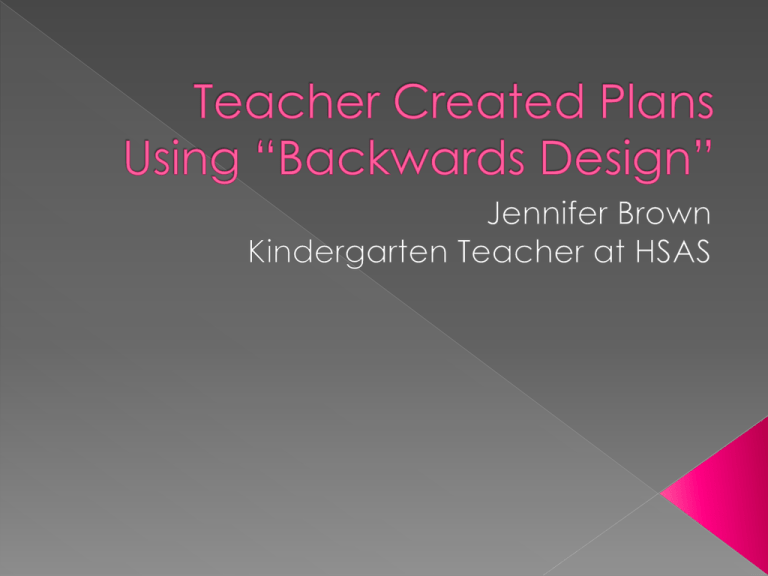
•Backwards design is a method of lesson planning brought on by Jay McTighe and Grant Wiggins. •In “Backwards Design” the teacher starts with classroom outcomes and then plans the curriculum, choosing activities and materials that help determine student ability and foster student learning. To learn more about “Backwards Design,” you can visit this website, http://www.edutopia.org/blog/interview-grantwiggins-power-backwards-design-ben-johnson. The “Backwards Design” approach is developed in three stages: •The first stage starts with educators identifying the desired results of their students by establishing the overall goal of the lesson by using content standards, which for us would be the Common Core Standards that we should be using. Stage 1 also focuses on identifying what students will know and what students will be able to do. •The second stage focuses on evidence of learning by assessment. Teachers plan performance tasks and evidence of understanding. Performance tasks determine what the students will demonstrate in the unit and what evidence will prove their understanding. •The third stage lists the learning activities that will lead students to the desired outcomes. •Teachers have been chosen from various Concept Schools to represent a certain grade level. •We are working to create grade specific units using the backwards design approach. Teachers will be able to view these units in ATLAS and see this method and how it looks. •I am currently working on the first grade unit. •The following slides will explain what I have done thus far, as well as what my plans are for this future unit. •My unit title in ATLAS will be: Amazing Story Elements •As I mentioned previously, this unit will be for Grade 1 and will be a 5 week long unit. •How did I approach writing this unit? In working on this unit, I have tried to think of how I could use the Treasures curriculum and the content in it to plan more effectively using this approach. For me, that meant looking at my means of assessment, and how could I reach all of my students. •The theme of my unit is : Story Elements. •The essential question, or “overarching” question for this unit is: What makes a story good? •The enduring understanding that students will gain through this unit: Character, setting and plot. Why is it important to know these story elements. •With this question/understanding identified, I can now begin to plan what my desired outcomes are for this unit. These are the most important “I can” statements from the unit: •I can use pictures and details in a story to describe its characters and setting (the who/where). •I can describe the events in a story using key details. •Progress Monitoring Assessments, such as DIBELS. •Journal Writing •Observation •Self-Reflection •Skill Demonstration •Writing Diagnostics •Choral Reading •Reading Passages. Personally, in doing this unit and understanding this approach, I feel like it makes me more reflective on what I choose to do in my classroom. I think it is harder to use this method in the K-2 grades, but I can see how looking at how you are assessing the students and what your expecations are for the unit can help you plan better for them as individuals rather then the class as a whole. Lastly, I feel like at first, it is pretty time consuming, but once you get into it, it doesn’t seem to take as long. When using this framework to plan, you find yourself asking more questions about why you do the things you do in your classroom. The handout is a copy of the sample unit from ATLAS taken from Mr. Flaherty. This is what the plan will look like once I insert my own plans, etc. This is the format Mr. Flaherty would like to see for ELA plans beginning next year. You are also getting a Understanding by Design Unit Template, as well as a copy of the one that I created for my unit.
